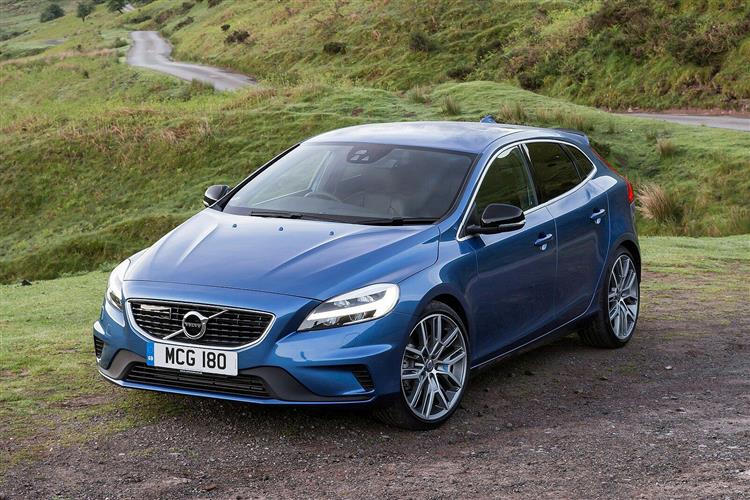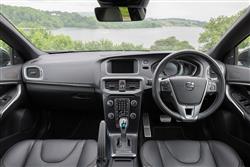How will you view?
This is a sample, and will stop after 30 seconds.
ENJOY SWEDE WITH EVERYTHING (some text hidden) SECTIONED_new_volvov40_2016
By Jonathan Crouch
Introductionword count: 95
As with most things in life, the best products take what seems a complicated bunch of requirements and reduce them to something very simple and elegant. Take this car, the Volvo V40, originally launched in 2012 but examined here in the improved form that debuted in 2016. The Swedish brand has a history of building premium compact models that dates all the way back to their PV51 model of 1936 and in this case, they rejuvenated what became a very strong contender in this segment thanks to the installation of powerfully efficient 'Drive-E' engine technology.
Modelsword count: 7
5dr Hatchback (2.0 petrol / 2.0 Diesel)
Historyword count: 488
The V40 was the car that turned around Volvo's fortunes in the modern era. It was launched back in 2012 but it took Volvo until 2016 to really get the engineering of this car right - and it's that later version of this model that we concentrate on here, complete with what the brand called its 'Drive-E' technology. A bit of V40 history before we get into that. There was a prior Volvo V40 before this one - a compact estate that sold between 1996 and 2004. This second generation V40 though was a family hatchback, so its lineage relates more directly to Volvo family hatchback models over the decades, cars that to be frank were generally pretty unremarkable aside from their safety stats. Through the 340/360 models of the late '70's, the 440/460 series of the late '80's and even the two generations of S40 saloon that then followed them, compact Volvo models sold steadily to virtuous Volvo people - but not really to anyone else. The brand's Chinese owners, Zhejiang Geely, who took over from Ford in 2010, needed more. A range of future models that kept the old qualities, but redefined them in a more dynamic, interesting, lifestyle-orientated and forward-thinking way. This MK2 model V40 , launched initially in 2012, was the first of these. Despite the 'V' designation, traditionally used by the brand to reference estate cars, this was a Focus-sized family hatch - but a rather posh one, aimed at the top end of this segment where you'll find premium models like BMW's 1 Series, Audi's A3 and the Mercedes A-Class. Its job was to take on these elite rivals and play a major part in doubling the company's worldwide sales by 2020. Hence a major investment in engineering that eventually saw fruition with the launch of the facelifted V40 model we look at here. This updated model was introduced in 2016, based around new generation 2.0-litre petrol and diesel 'Drive-E' units that offered a huge step forward in performance and efficiency over the aging Ford-derived powerplants they replaced. The first signs of this had previously arrived in 2014, with the arrival for V40 buyers of a diesel D4 variant that gave us a taste of what was to come. Here was a car that could sprint to 62mph in less than 7.5s, yet could return a combined cycle average of nearly 75mpg, with CO2 returns below 100g/km (both NEDC figures). Two years on in this facelifted line-up, the D4 engine was joined by other 'Drive-E' derivatives offering an even greater emphasis on frugality, notably a D2 model capable of nearly 80mpg and CO2 emissions as low as 94g/km (again, NEDC figures). It was readings like these that really got this car's German rivals worried in the period this updated car was on sale (2016-2020). So can the complete package on offer here make equal sense as a used buy? Let's find out.
What You Getword count: 290
The safer a car is, the safer will be its approach to exterior design. That was once true of small Volvos - but it isn't any more. In fact, it's precisely because this V40 is good in an accident that it looks so smart. We'll explain. Almost all cars have relatively high bonnet lines, so as to leave an under-bonnet void to meet pedestrian impact legislation. But, thanks to a unique under-bonnet airbag, this car doesn't need to allow for that, so its bonnet line can be much lower, part of a lean, wide coupe-like stance in a shape very slightly longer and wider than rival BMW 1 Series or Audi A3 models. In short, it's all pleasantly different, an observation equally applicable in the cabin. The inside of this car needed to be good if sales were to be stolen from the likes of the Mercedes A-Class and the Audi A3, a tough assignment tackled with an unpretentious 'Designed Around You' philosophy. The idea was that, like IKEA furniture, this cabin should be typically Scandinavian, comfortable, simple, intuitive and visually pleasing. And broadly it is. Courtesy of a curve on the doorsill, access into the back isn't quite as easy as with some rivals, but once you're inside, leg, shoulder and kneeroom are quite good for two adults, courtesy of the way that the seats were angled slightly inwards to give rear occupants more space and a better view forward. And luggage room? Overall, the total space provided is significantly more than you'd get in a Ford Focus, about the same as you'd get in a more comparable Mercedes A-Class and about 10% less than you'd get in rivals like Audi's A3 and BMW's 1 Series from this era.
To see the full road test text contact us on 0330 0020 227
Pictures (high res disabled)

.jpg)
|
.jpg)
|
.jpg)
| |||
.jpg)
|
.jpg)
|
.jpg)
| |||
.jpg)
|
.jpg)
|

|
Scoring (subset of scores)
Category: Compact Family Cars
| Performance | |
| Handling | |
| Comfort | |
| Space | |
| Styling, Build, Value, Equipment, Depreciation, Handling, Insurance and Total scores are available with our full data feed. | |



